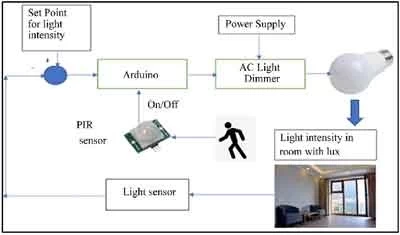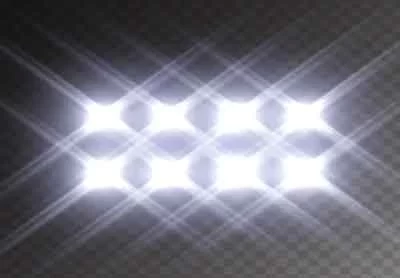BAS for Lighting Control and Energy Management

Building Automation Systems (BAS) are intelligent networks that manage and optimize various aspects of a building's operation. One of their most impactful applications is in lighting control, contributing significantly to energy efficiency and cost savings. This article explores how BAS leverage different strategies to optimize lighting systems, analyzing their benefits, considerations, and potential drawbacks.
Visit Our Building Automation Study Course
Optimizing Lighting with BAS: Strategies and Applications
BAS employ several key strategies to optimize lighting systems:
Daylight Harvesting: This strategy utilizes natural light to reduce dependence on artificial lighting. BAS can integrate with light sensors strategically placed throughout the building. These sensors measure ambient light levels and adjust artificial lighting accordingly. When sufficient natural light is available, the BAS dims or switches off artificial fixtures, significantly reducing energy consumption.
Occupancy Sensing: BAS can incorporate occupancy sensors embedded in ceilings, walls, or furniture. These sensors detect human presence in a space and trigger lighting control. When a space is unoccupied, the BAS automatically dims or turns off lights, eliminating unnecessary energy use in areas with intermittent occupancy like hallways, conference rooms, or restrooms.
Automated Control Strategies: BAS can be programmed with sophisticated control strategies to further optimize lighting usage. Time-based scheduling allows for automatic adjustment of lighting levels throughout the day. For example, lights can be dimmed or switched off during off-peak hours or weekends. Additionally, BAS can integrate with weather data to adjust lighting based on external conditions. On brighter days, the system can rely more heavily on daylight harvesting, while on overcast days, artificial light levels might need to be adjusted automatically.
Benefits of BAS-controlled Lighting
The implementation of BAS for lighting control offers several compelling benefits:
Energy Savings: Studies indicate that BAS-controlled lighting systems can achieve energy reductions of 30-70% compared to traditional manual controls. This translates to significant cost savings on electricity bills, particularly for buildings with extensive operating hours.
Reduced Maintenance Costs: Occupancy sensors can extend the lifespan of lamps by reducing unnecessary operation. Additionally, BAS can provide real-time data on lamp performance, allowing for proactive maintenance and preventing sudden outages.
Improved Occupant Comfort: BAS can be programmed to maintain desired light levels while minimizing glare. Daylight harvesting promotes a more natural lighting environment, potentially enhancing occupant well-being and productivity.
Environmental Sustainability: Reduced energy consumption translates to a lower carbon footprint for the building, contributing to environmental sustainability goals.
Considerations and Potential Drawbacks
While BAS-controlled lighting offers numerous benefits, some considerations need to be addressed:
Initial Investment Costs: Implementing a BAS can involve upfront costs for hardware, software, and installation. However, the long-term energy savings often outweigh the initial investment within a reasonable payback period.
System Complexity: The complexity of a BAS can vary depending on the building size and desired functionalities. A well-designed and properly configured system is crucial for optimal performance and ease of use.
Occupancy Patterns: BAS effectiveness hinges on understanding occupancy patterns. Occupancy sensors might not be suitable for areas with constantly changing occupancy or tasks requiring specific light levels.
User Acceptance and Control: Building occupants might require training and familiarization to adjust to BAS-controlled lighting. Balancing energy savings with occupant comfort is essential to ensure user acceptance.
Types of Lighting Control Systems within BAS
Building Automation Systems can integrate with a variety of lighting control systems:
Dali (Digital Addressable Lighting Interface): This digital protocol allows for two-way communication between the BAS and individual light fixtures. DALI enables precise control of individual lights, dimming, and scene creation.
0-10V Dimming: A widely used analog protocol for dimming control. BAS can send a 0-10V signal to compatible dimmable ballasts, adjusting light levels smoothly.
Switching Relays: These relays control power supply to entire lighting circuits or groups of fixtures. While less granular than DALI or 0-10V, they offer a cost-effective solution for basic on/off control.
Technical Considerations for Implementing BAS-controlled Lighting
Sensor Selection and Placement: Selecting the appropriate sensors (occupancy, light level) and strategically placing them is crucial for optimal performance. Factors like sensor range, field of view, and mounting height need to be considered.
Integration with HVAC Systems: BAS can be integrated with HVAC systems to optimize overall building energy efficiency. For instance, reduced occupancy detected by lighting sensors can trigger a corresponding adjustment in HVAC operation.
Data Security and Cybersecurity: As BAS connects various building systems, robust cybersecurity measures are essential to protect against unauthorized access and potential disruptions.
System Commissioning and Maintenance: Proper commissioning ensures the BAS functions optimally, and ongoing maintenance is vital to maintain performance and address any potential issues.
Building Automation Systems offer a powerful tool for optimizing lighting systems in modern buildings.
By leveraging daylight harvesting, occupancy sensing, and automated control strategies, BAS can significantly reduce energy consumption, lower operational costs, and enhance occupant comfort. However, a successful BAS implementation requires careful consideration of factors like initial investment, system complexity, user acceptance, and technical details like sensor selection and integration with other building systems.
Future Trends in BAS-controlled Lighting
The future of BAS-controlled lighting is promising, with several emerging trends shaping the landscape:
Integration with IoT (Internet of Things): BAS are increasingly integrating with IoT devices, enabling even more granular control and real-time data collection. This allows for further optimization and personalized lighting experiences for occupants.
Wireless Control Systems: Wireless communication protocols are gaining traction, simplifying installation and offering greater flexibility in sensor placement.
Machine Learning and Predictive Maintenance: Machine learning algorithms can analyze sensor data to predict lamp failures and optimize maintenance scheduling, reducing downtime and costs.
Human Centric Lighting (HCL): HCL focuses on the impact of light on human health, well-being, and circadian rhythms. BAS can be programmed to adjust lighting color temperature and intensity throughout the day to promote occupant well-being and productivity.
Building Automation Systems play a critical role in the evolution of intelligent buildings. By optimizing lighting systems, BAS contribute significantly to energy efficiency, cost savings, and occupant comfort. As technology continues to evolve, BAS-controlled lighting systems will become even more sophisticated and integrated, offering a dynamic and sustainable approach to building management.





